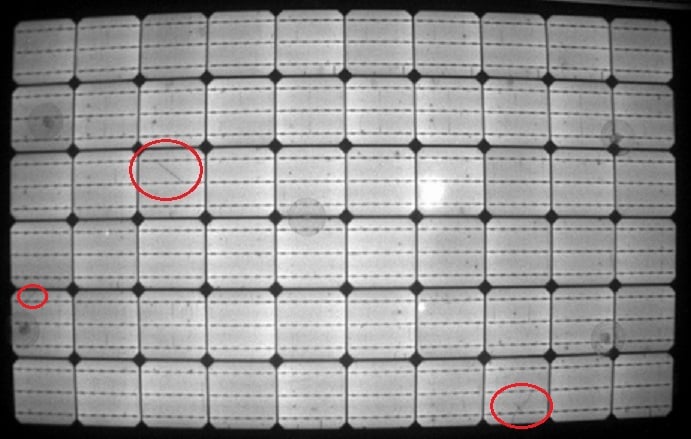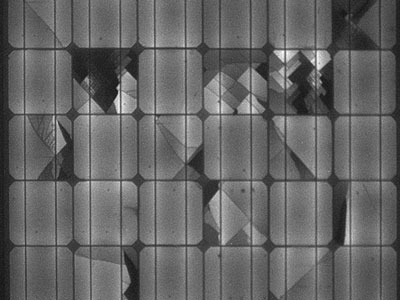Micro Cracks: Causes and Impacts on Solar Panels
Micro cracks in solar cells are a frequent and complicated challenge for manufacturers of solar photovoltaic (PV) modules. While it is difficult to assess in detail their impact on the overall efficiency and longevity of a solar panel, they are one of the main sources of malfunctioning or even inactive cells. However, micro cracks are nearly impossible to avoid and – in the long run –will affect most solar panels, including high-quality panels. They are triggered by mechanical and chemical environmental factors causing stress to the panel operating in the field, such as hail, snow, sun, wind, and severe coldness. Further stress factors are geared to the thermal cycles of the cells involving contracting, expanding, and flexing metal contacts, solder, and wire interconnect.
Potential Impacts of Micro Cracks
Even though they are nearly impossible to avoid in the long run, their potential impacts pose quite a serious issue that should be addressed and reduced as early as possible – a requirement that is only insufficiently met during quality control at many manufacturers.
 Micro cracks visible with EL Imaging test
Micro cracks visible with EL Imaging testMicro cracks may have various defect origins and result in rather “soft” outcomes such as yield-reducing shading of parts of the affected cell up to more severe impacts involving decreases of the short circuit current and cell efficiency.
Micro cracks are often a result of mechanical forces or thermal stress. In the production process, micro-cracks most frequently occur during the lamination of the panel, especially when using certain EVA films with weak moisture impermeability. If in such cases even slight moisture occurs, it cannot easily evaporate which is particularly problematic in hot areas and environments. The moisture may in such cases pass through the micro-cracks on the front of the laminate, followed by the oxidization of the contact fingers.
Micro cracks in a mono-crystalline solar (PV) module
Micro cracks can also occur during manual solar cell soldering when varying thermal expansions of the copper and the silicon elements develop at temperatures above 300°C. Those temperature differentials can lead to the formation of micro-cracks in the substrate and thus result in higher cell resistance. Cracks potentially grow over a longer operational time and thus extend their malicious impact on the functionality and performance of a PV module, potentially triggering hot spots as well. Undetected, micro-cracks can result in a less-than-expected field lifespan. They differ in size, location of the cell, and impact quality.

ELCD test - defect cells Optimally, ELCD testing is performed once before the lamination process so that the defect solar cells can be replaced and then again after (careful) lamination. This procedure costs time and manpower which not all PV manufacturers are willing to invest into the quality of their produced solar panels.
How to find and eliminate micro-cracks in solar cells?
There are different quality testing methods to identify micro-cracks of which electroluminescence crack detection (ELCD) testing is one of the most applied methods. Although less common, ELCD may also be referred to as "solar panel x-ray scanning". ELCD testing can detect hidden defects that were before untraceable by other testing methods, such as infrared imaging with thermal cameras, visual inspection, or flash tests. It is an imaging measurement process that allows one to peer directly into the cells of a PV module and locate potential inherent defects. Visually, micro-cracks may in some cases appear in the form of so-called snail trails on the cell structure. However, snail trails – as a long-term impact sign – can also be the result of a chemical process causing the surface of the cell to change and/ or hot spots. Therefore, visual checking of PV modules alone is not an effective method to identify micro-cracks and should not replace a thorough ELCD check.
Useful reading and references:
a) http://www.renewableenergyworld.com/rea/news/article/2010/12/minimizing-micro-cracks-in-solar-cell-interconnection-during-manual-soldering
b) http://idealpv.com/ESW/Files/Solar_Cell_Microcracks_Are_Inevitable_And_idealPV_
FOZHS_Makes_Them_Irrelevant_120323c.pdf
